
Battlefield crosses
War memorials are a common sight at churches across the UK. Many are impressive constructions of immovable stone. But others have a more intrepid history.
A century ago, hundreds of thousands of simple wooden crosses marked the graves of Commonwealth soldiers along the Western Front in France and Belgium. When they were replaced with headstones, many were given to churches.
Some are cracked, water damaged and have woodworm. Some even have the original mud from the Battle of the Somme varnished on to them. Others are ornate, made in the field by comrades from scrap wood and bearing personal inscriptions. Aviators’ graves were often marked by propellers.
Discover some of these battlefield crosses and the churches where you can find them with our guide below.
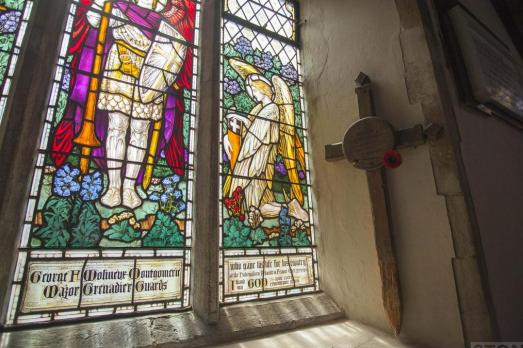
Glorious glass
Major GFM Mongomerie
3rd Battalion, Grenadier Guards
22 October 1915
The flags above the wooden war memorial in the chancel are said to have come from the medical post where George was treated for the head wound that killed him. George was 46 when he died. He was married to Sybil Mary Blanche Somerset they had two daughters. He is buried at Vermelles British Cemetery.
The Victorian and early 20th century stained glass is exquisite and includes a window commemorating George Montgomerie. There is also a brass plaque to all the men of the parish who died.

Brothers in arms
Captain CAG Hodgson
The Devonshire Regiment
20 March 1918
The simple cross is situated outside the church, near the south door. Cyril was 33 years old when he died from malaria contracted in Palastine. He is buried at Cairo War Memorial Cemetery. Cyril was one of two sons to Sir Charles and Lady Hodgson. His brother Charles died of wounds received, also in Cairo, ten days after his brother.
The church has a beautiful stained glass window given by the family. It was split into three as work was needed in the church.

A stretcher & a stallion
Lieutenant Raymond Asquith
Grenadier Guards
15 September 1916
Lieutenant EW Horner
Queen Mary's Own Hussars
November 1917
‘The end for Asquith came quickly: as he led his company forward into the hail of shell and machine gun fire, he was hit in the chest. Raymond knew his wound was fatal, he casually lit a cigarette as he was carried on a stretcher’
The church was restored by the Horner family in the 1880s. There is a huge equestrian statue to Edward, by Sir Alfred Mannings (the plinth by Sir Edwin Lutyens). Edward is buried at Rocquigny-Equancourt Road British Cemetery, Manancourt.
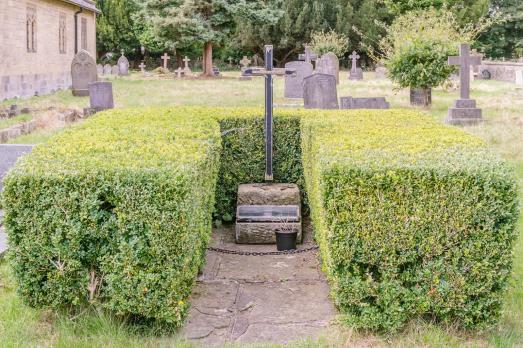
An unknown soldier
Unknown British Soldier
Standing near the front of the church, surrounded by a hedge, is a replica cross along with the remains of the original cross in a case. There is also a stone cross remembering those who died in the first and second world wars.
Inside are two beautiful stained glass windows. One shows a soldier receiving medical treatment, the other is of a Tommy in action advancing through enemy trenches. On the wall is an article about William Hughes, killed on 3rd march 1916 in France. Perhaps William’s mother was responsible for the cross of the unknown warrior.
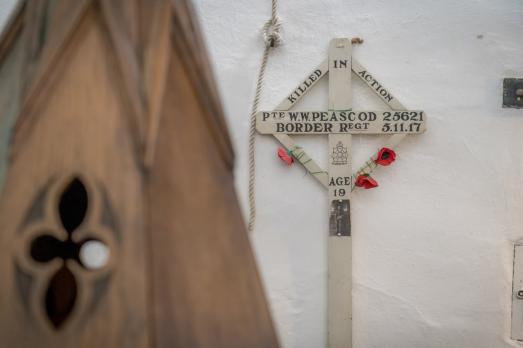
A teenage soldier
Private W.W Peascod
Border Regiment
5 November 1917
Located in the church tower, this battlefield cross features cracks and staining that show it was originally inserted into the ground. Private W.W Peascod was aged 19 when he died and is also commemorated on a war memorial in St Oswald’s Church.
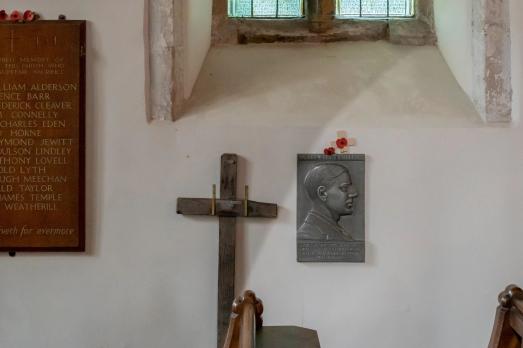
Memorialised in silver
2nd Lieutenant R.P Pulleine
Royal Field Artillery
4 September 1916
Outside the Lady Chapel at St Agatha’s Church in Easby, Yorkshire, this cross is pinned to the wall. Next to it, Pulleine is also commemorated in a silver plaque, designed by the sculptor Percy Metcalf.
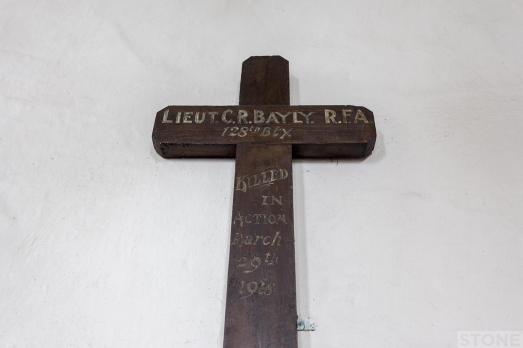
The mud of Flanders
Lieutenant CR Bayly
Royal Fleet Auxiliary
29 March 1918
Charles was born in Peru in 1894. He was 24 when the observation post he was in at Fampoux Lock received a direct hit. The cross originally stood in Anzin-St Aubin British Cemetery, Pas de Calais, France and still has some mud under the varnish. He was related to the village doctor, possibly explaining why the cross is here.
St Mary’s is a beautiful and airy space, plain and simple, no stained glass but with a barn like roof. The church also features rood screen with two pre-reformation panels.

A pair of crosses
Lieutenant Philip Mighell
9th East Surreys
12 October 1917
Outside St Mary’s Church in Beddington, Surrey, you’ll find this pair of crosses. It is thought that the larger cross, which bears the name of Lieutenant Philip Mighell, is a later replica.
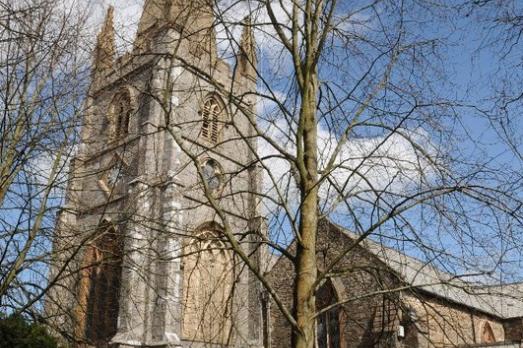
Two local men
Private CE Leate
Somerset Light Infantry
10 July 1917
Lieutenant Colonel FGG Morris DSO
Border Regiment
16th August 1917
Claude was 23 when he was killed. He is buried at Messines Ridge British Cemetery. Morris was 48 and is buried at Canada Farm Cemetery.
St Michael was ‘blowen up with powder Febr ye 16th Anno 1645 and rebuilt AD 1651’. During the Battle of Torrington the Royalists had stored 80 barrels of gunpowder in the church. The Roundheads locked prisoners in the church and somehow the explosion happened. A cobbled mound is said to contain the remains of 60 Royalists.
The Returned
Battlefield Crosses and grave markers exist across the whole country. They can be found in churches, memorial halls, chapels, museums and private dwellings.
The Returned project aims to provide an online database, with locations and as much detail as possible about the stories surrounding the people whose graves they marked and the people they left behind. The project is currently on hold while they find funding for it to continue.
